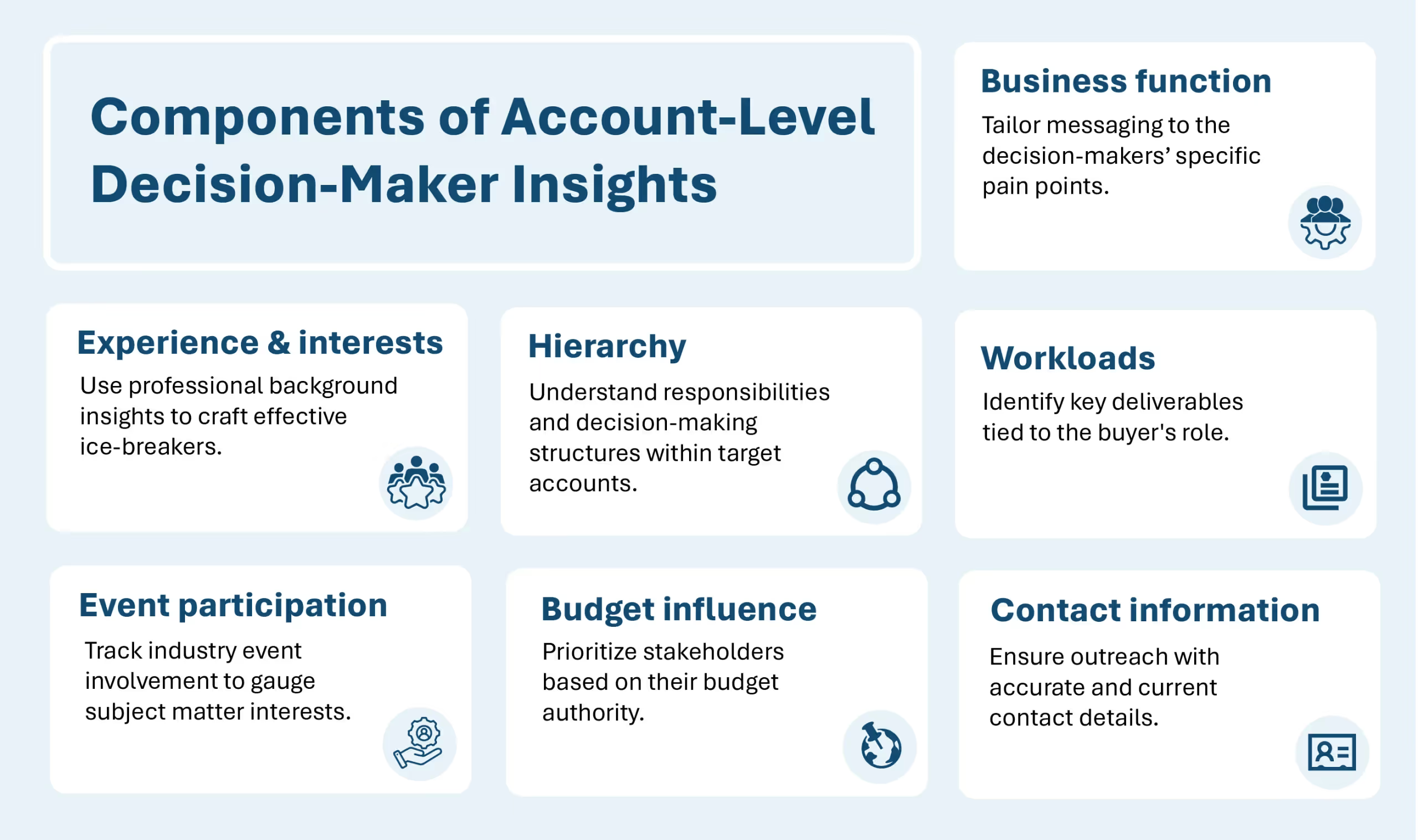Understand Buyer Organization Structure for Your ABM Motion with AI
A decision-making hierarchy is a structure through which organizational decisions are made. It reflects the probable roles, responsibilities, and KPIs of stakeholders in the decision-making process.
In the past, gaining insights into a target account’s organization structure required extensive manual research by Account-Based Marketing teams – that often took a long time.
AI-powered sales intelligence platforms have fast-tracked the process, analyzing vast amount of data from corporate websites, media/industry reports, annual reports, social media, and thousands of other data sources to provide a detailed and up-to-date picture of the target account’s organizational hierarchy – INSTANTLY.
Deep Dives into Decision-Making Ecosystem for an Impactful Account-Based Marketing
Understanding the account-level decision makers at a granular level is the first step for building stronger relationships in account-based marketing.
AI-powered sales intelligence platforms enables deep dives into buyer-level behaviors of key stakeholders. This provides a comprehensive view of decision-makers, encompassing their experience, influence in deal-making, preferences, technology affinity, and behaviors.
Buyer-level intelligence has to go beyond surface-level views, to become actionable. That could enable account-based marketing teams to create custom solutions and messaging. It could resonate better with the factors that drive the decisions of the target buyers.
AI powered sales intelligence platforms can make this happen for account-based marketing teams, with instant access to the required buyer-level intelligence.
Critical components of buyer-level intelligence
Intelligence on decision-makers or buyer intelligence is created with the below insights that is critical for account-based marketing teams. This includes:
- Business function: Understanding the role and responsibilities of decision-makers helps account-based marketing teams tailor messaging to their specific pain points and needs.
- Experience and professional interests: Insights into their professional background, interests, and career trajectory can offer actionable insights on how ice-breakers can be crafted.
- Hierarchy: The hierarchy indicates the probable responsibilities and KPIs of target buyers and decision-making structure within the target accounts.
- Workloads: Strong indication about the deliverables of the buyers as part of their role within the target accounts.
- Event participation: Tracking their participation in industry events enables account-based marketing teams to learn about the subject they exchange ideas on.
- Budget influence: Knowing the buyer’s influence on budget-related decisions helps to prioritize the right stakeholders within target accounts.
- Contact information: Accurate and up-to-date contact details ensure that outreach efforts reach the intended recipients efficiently.

Reduce Enterprise Sales cycles by 50% – by identifying correct buyers within accounts
Draup worked with a large American multinational strategy and management consulting company, with the below challenges:
- Identifying executives with budgetary and decision-making influence.
- Identifying account-level growth potential and mapping relevant offerings.
The company overcame the above challenges by leveraging Draup’s Sales Intelligence platform. It helped their team identify executives and key buyers in their target account.
The company was able analyze buyer workloads, review previous decisions, assess their experience working with tech, and determine how amenable they are to adopting new technologies and tools in their account-based marketing.
As a result, the company was able to:
- Shorten the sales cycle.
- Increase deal sizes.
- Reduce the time-to-impact by 50%. (the timeline of opportunity identification and account planning came down to 1 week from 2.5 weeks)
Companies like Salesforce, Microsoft, Capegemini, Intel, PWC, Genpact, Infosys, and many more leverage Draup’s AI-powered sales intelligence platform to identify buyers and fast-track their account-based marketing.









.svg)

.svg)
.svg)
.svg)













.svg)





.svg)





.svg)
